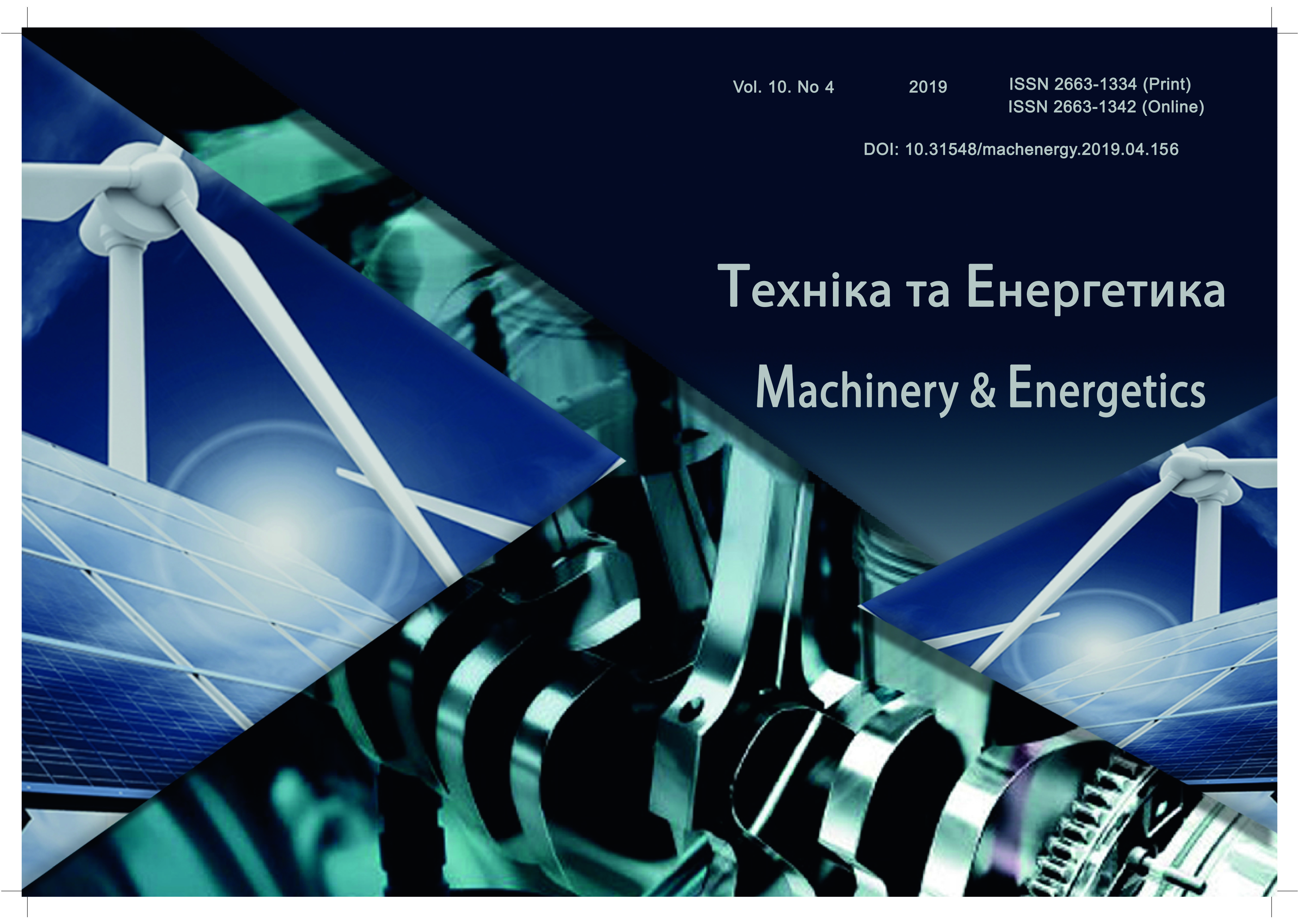Analysis of methods and means for mixing the substrate in the methane kit of biogas plants
DOI:
https://doi.org/10.31548/machenergy2019.04.019Keywords:
biogas plant, methane tank, mixer, manure, substrate, methods of alteration.Abstract
The paper analyzes the existing methods and means for mixing the substrate in the digesters of bio-gas plants (BSU). In the latter, it is necessary to use high-quality mixers, since they maintain the homogeneity of the substrate, evenly distribute biomass and heat, and prevent the formation of bottom sediments and a floating layer. The necessary mixing intervals are determined individu-ally for each biogas plant by sampling. After starting, it is better to mix somewhat more often than in normal mode and slow down after it is already possible to distinguish the formation of a floating crust. Bacteria grow in colonies and form lumps. Quick mixing breaks them up and prevents bacteria from developing, their slow work is optimal. Therefore, we substantiated the use of various mixing methods in digesters, advantages and disadvantages in the process of their operation, operation and construction fea-tures. The requirements for mechanical mixers are consid-ered. The traditional mixing technique, first of all, high-speed propeller submersible mixers, was borrowed from the technique for working with manure, which was adapted for biogas technology. Due to the increase in the use of renewable raw materials, substrates with a high dry matter content are used, which negatively affect the flowing prop-erties of the substrates, therefore it is necessary to reduce the number of revolutions of the blades. Since in this case the mixing will not proceed well enough, it is necessary to increase the diameter of the agitator blades or their number. Hydraulic mixing has the advantage that the mechanical blocks necessary for mixing are located outside the reactor and, as a result, their wear is negligible and maintenance is less expensive. The use of hydraulic and pneumatic sys-tems is limited only by substrates of low viscosity with a slight tendency to foam, floating crust and sediment.References
A guide to biogas: from receipt to use. (2010). Ger-many: Agency for Renewable Resources (FNR), 215.
Boltyanskaya, N. I. (2016). Analysis of the main areas of resource conservation in animal husbandry. Motrol: Motoryzacja i Energetyka Rolnictwa. Vol. 18. No13, 49-54.
Boltyansky, B. V. (2015). Substantiation of the structural and functional scheme of the bioreactor - instal-lations for the processing of organic waste (manure). Pro-ceedings of the Taurida State Agrotechnological Univer-sity. Melitopol: TSATU. Vol. 15. No.3, 182-188.
Shatsky, V. V., Sklіar, A. G., Sklіar, R. V., Solodka O. O. (2013). Influence of substrate structure on biogas yield in methane digestion. Proceedings of the Tav-rida State Agrotechnological University. Melitopol: TSATU. Vol. 13. No.3, 3-12.
Skliar A. G., Skliar R. V. (2014). Analysis of meth-ods of determination of residence time and load on me-thane tank. Bulletin of KhNTUSG them. P. Vasilenko. Kharkov. Vol. 148, 405-412.
Skliar A. G., Skliar R. V. (2014). Analysis of designs of biоgas plants with vibration intensification of anaerobic fermentation process. Proceedings of the Tavrida State Agrotechnological University. Melitopol: TSATU. Vol. 14. No 3, 196-203.
Skliar A. G., Skliar R. V. (2014). Methods of inten-sification of methane digestion processes. TSATU Scien-tific Bulletin. Melitopol. Vol. 4. No.1, 3-9: site. URL: http://nauka.tsatu.edu.ua/e-journals-tdatu/pdf4t1/3.pdf.
Skliar А., Skliar R. (2014). Justification of conditions for research on a laboratory biogas plan. MOTROL: Motoryzacja I Energetyka Rolnictwa. Lublin. Vol.16. No.2, 183-188.
Skliar A. G., Skliar R. V. (2015). Energy effi-ciency analysis of methane tank. Tavriya State Agrotech-nological University. Melitopol: TSATU. Vol. 15. No.2, 316-322.
Sklіar, A. G., Sklіar, R. V., Grigorenko S. M. (2019). Program and methodology of experimental re-search on laboratory biogas plant. Bulletin of Kharkiv Na-tional University them. P. Vasylenko: scientific profes-sional publication. Kharkov, No.199, 267-275.
Downloads
Published
Issue
Section
License
Relationship between right holders and users shall be governed by the terms of the license Creative Commons Attribution – non-commercial – Distribution On Same Conditions 4.0 international (CC BY-NC-SA 4.0):https://creativecommons.org/licenses/by-nc-sa/4.0/deed.uk
Authors who publish with this journal agree to the following terms:
- Authors retain copyright and grant the journal right of first publication with the work simultaneously licensed under a Creative Commons Attribution License that allows others to share the work with an acknowledgement of the work's authorship and initial publication in this journal.
- Authors are able to enter into separate, additional contractual arrangements for the non-exclusive distribution of the journal's published version of the work (e.g., post it to an institutional repository or publish it in a book), with an acknowledgement of its initial publication in this journal.
- Authors are permitted and encouraged to post their work online (e.g., in institutional repositories or on their website) prior to and during the submission process, as it can lead to productive exchanges, as well as earlier and greater citation of published work (See The Effect of Open Access).

